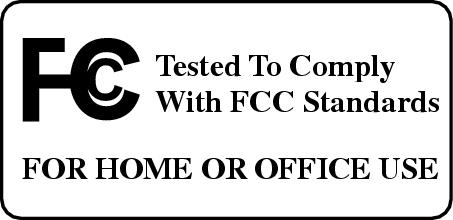Declaration of Conformity: Three Questions About Unlicensed Wireless Devices
October 21st, 2009 by ChristianI was recently having a conversation about unlicensed wireless devices. That is: radio transmitters that don’t require advance permission from the government to operate (a license). Examples of unlicensed devices are baby monitors and cordless phones. You can buy them at Best Buy and you don’t need to have your own radio station call letters or pass a test. One reason that people find unlicensed devices interesting is that they often have a lot of them sitting around their house or office.
Some questions came up in the conversation and they are hard for me to answer. I’m putting them up here as a way to document my attempts.
Here’s the first one: What frequency band contains the most unlicensed devices? “Most” in this case meant most diverse. In other words: Where in the ether would we find the greatest diversity of different kinds of things sharing frequencies with each other? My guess was the 2.4GHz band, as that is the frequency band that really popularized the idea of mainstream low-powered unlicensed devices for untrained consumers in the 1970s using spread spectrum techniques. That’s where some of the most common devices today really took off. Another good bet would be 900MHz, however. (Amateur radio enthusiasts and engineers used devices without specific frequency licenses much earlier than that. All of this is chronicled in Kenneth Carter’s Unlicensed to Kill.)
You could pick other bands as historically important but they didn’t really take off in the same way. (I’m thinking of the U-PCS and U-NII bands.) There is some more history in Henry Goldberg’s short paper Grazing on the Commons, which also draws attention to of Silicon Valley’s interest in unlicensed wireless operation and includes the delightful quote:
Like sin itself, the deliberate un-licensing of spectrum began with an Apple.
The next question: Is there a list of all of the different kinds of things that operate in the band? “Unlicensed” means the device operator doesn’t need permission but the device still needs to get one of those nifty FCC stickers on it — called certification. Here’s a retro one.

In some contexts this is called a “declaration of conformity.” What a nice phrase! Those administrative law regulators really have a way with words. I’ll use it as my post title.
So you can search the certifications online. I searched 2400 – 2483 MHz (not exact match) in the charmingly not-user-friendly EAS database at our own Federal Communications Commission (use “authorization search“). It turns out there are 3001 different things certified to operate in that band right now. The database is so hard to use that there is no easy way to see what the devices are without several clicks for each device. I tried two at random and got (1) an off-brand wireless camera and (2) an old-looking GE cordless phone.
Okay that didn’t really help. Let me expand the question and just brainstorm instead. Here’s question number three: Is there a list of all of the different kinds of unlicensed devices? Maybe I can brainstorm one. I’ll see if I can list all of the examples of unlicensed transmitters that are intentionally transmitting. My guess is that we can find examples of most of these (except as noted in parentheses) in the 2.4 GHz range.
- wireless microphones
- telemetry (water controllers, industrial controllers, etc.)
- wireless sensors
- anti-pilferage systems (those planks you walk through when entering stores)
- security alarm systems
- auditory assistance devices (help you hear the sermon in church)
- garage door openers
- ground-penetrating radar (below 2GHz)
- through-wall imaging (not sure what this is exactly… sounds awesome! or scary.)
- medical imaging (some)
- keyless entry (wireless car key fob)
- wireless cameras
- remote controls
- wireless video game console controllers
- radars (frequency varies)
- marine radios (some VHF radios don’t require a license)
- toys (“Mr. Microphone” is a famous historical example though it initially operated in AM and then FM radio)

- RC cars
- novelties (??? don’t know what this means exactly but the term shows up in certification records)
- any Bluetooth devices (mobile phone headsets, PDAs, laptops)
- also ZigBee devices
- wireless LANs like Wi-Fi, HiperLAN, HomeRF and any device that uses them (networked picture frames, printers, laptops, computers, phones)
- cordless phones (not cellular)
- low-power transmitters designed to broadcast your iPod or whatever to your car radio (uses FM bands)
- talking houses, talking billboards, or talking roadsigns (temporary advertising or informational messages — only some of these are unlicensed — they must be low power)
- RFID tags (although at lower frequencies than 2.4GHz) can now be found all over the place in anything that someone wants to track.
- toll road transponders, airline baggage tracking tags, various shipments of valuable or controlled substances where the boxes/containers are tagged (e.g., prescription drugs), fast-pay keyfobs, shipping containers, credit cards (American Express blue card), keyless entry cards in your wallet, passports, expensive car tires… I read in Wired Magazine a while ago that rare Indian elephants were having chips implanted to reduce trafficking.
Okay I’m running out of steam. Anything else? I seem to remember that J. H. Snider wrote some sort of list like this but I can’t find it.

July 6th, 2014 at 5:45 am
Terrific Piece